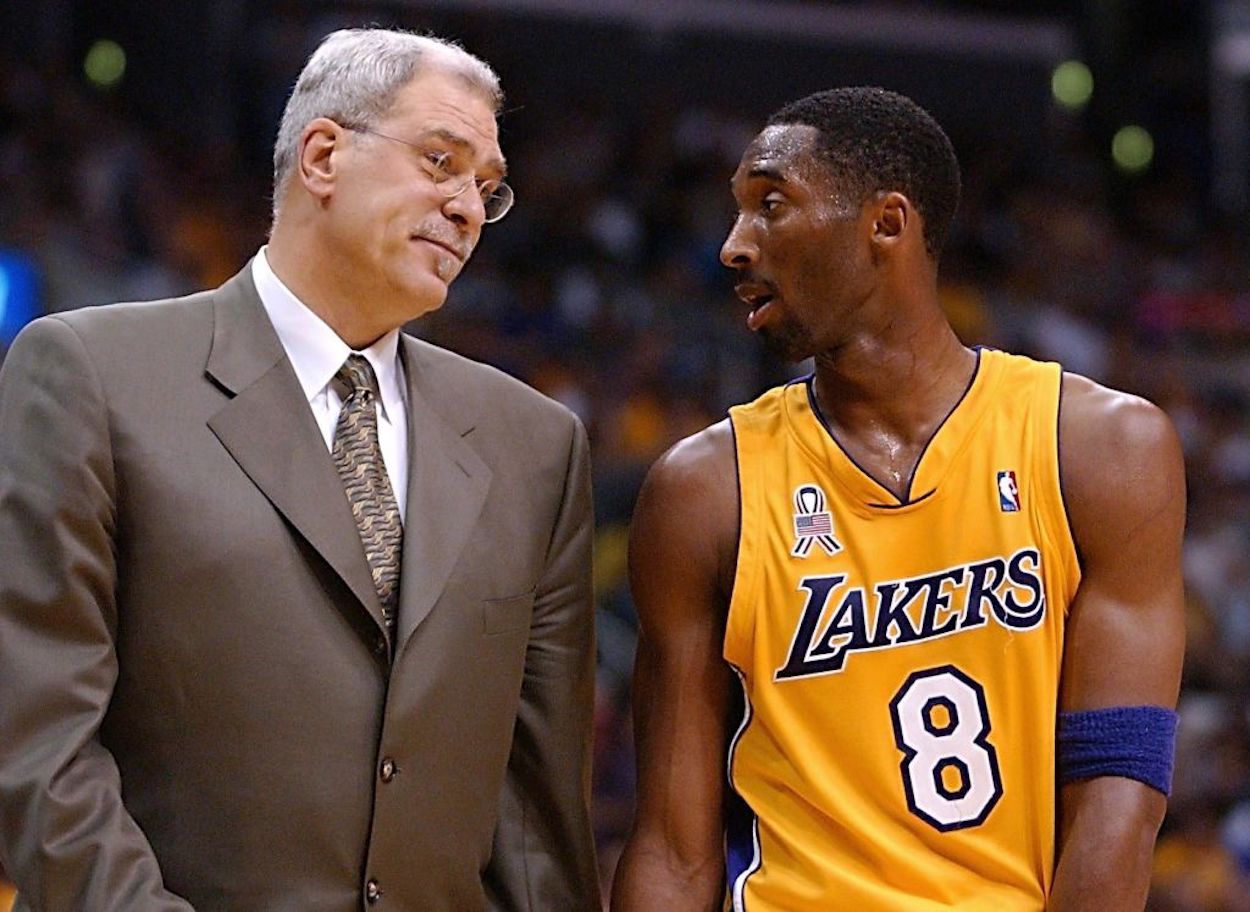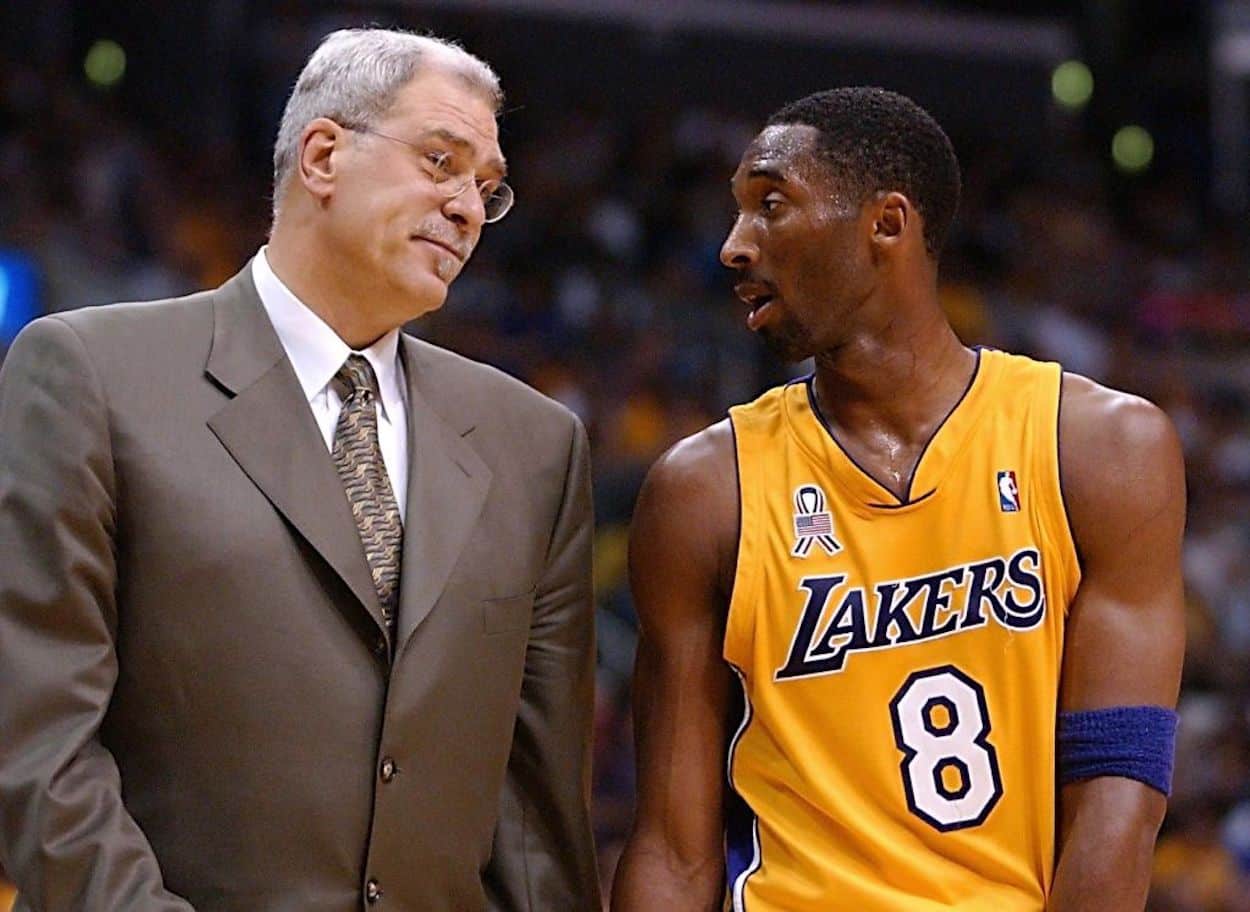NBA
Kobe Bryant Once Remembered the ‘Most Unorthodox Drill’ Phil Jackson Ever Put the Lakers Through

When you think of the late Kobe Bryant, you probably think of a serious guy who was 1000% focused on basketball. And while that’s not entirely inaccurate — Mamba Mentality was a real thing, after all — the legendary guard did work with Phil Jackson. The Zen Master, for better or worse, wasn’t afraid to pull some unconventional ideas out of his metaphorical hat.
In fact, Bryant addressed that exact topic during a 2019 interview. When asked about the “most unorthodox drill” he ever faced on the practice court, Jackson’s efforts landed at the top of the list.
Kobe Bryant never forgot Phil Jackson’s tai chi and incense

During his time on the NBA hardwood, Kobe Bryant took part in countless practices. The ones with Phil Jackson, however, still managed to stand out.
In 2019, the Lakers star spoke to Sports Illustrated about his young adult novel series. After admitting that one of the characters, Rolabi Wizenard, was partially inspired by Jackson, Bryant was asked about “the most unorthodox drill” he had ever experienced. The guard immediately went back to his time in Hollywood with the famous coach.
“Phil had us doing tai chi before practice,” Kobe remembered. “He brought in a tai chi master, and we were doing poses like Monk Gazing at Moon. Phil used to burn incense and do all kinds of stuff.”
While there are some unanswered questions — When did the tai chi happen, and how accepted were yoga, stretching, and similar practices at the time? What sort of poses were being done? How much incense was burning? What was the balance between tai chi and basketball work? — the choice certainly seems like something out of Jackson’s wheelhouse. He was known for pulling elements of Eastern and Native American thought into his coaching. If anything, you could say that tai chi and incense were fairly benign.
When it came to working with Dennis Rodman, for example, Jackson pulled in the concept of “a heyoka — a backward-walking person.” While that might seem complicated to the average athlete, the concept helped the famously unique forward feel seen and understood. The coach would also subject his players to a bizarre test, asking them everything from their favorite author to their least favorite physical characteristic.
On the whole, though, everything seemed to work out. While you could argue that Jackson benefited from having incredible talent at his disposal, managing those egos provides its own challenge. The Zen Master, however, had both the resume and the techniques necessary to keep everyone largely on the same page.
When you have more championship rings than you do fingers, you certainly have leeway to try some unconventional ideas.











